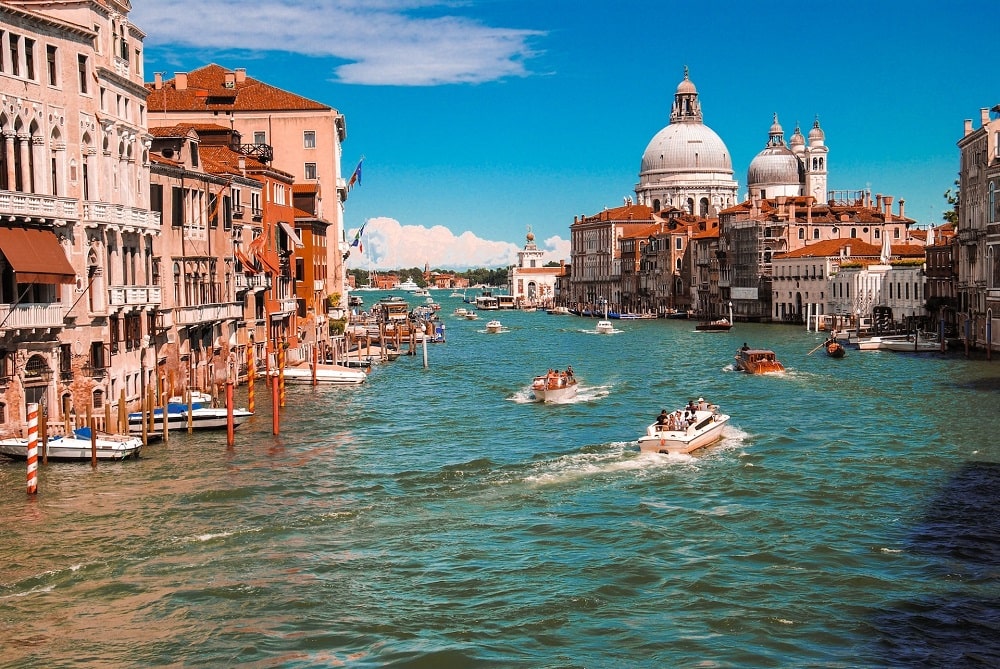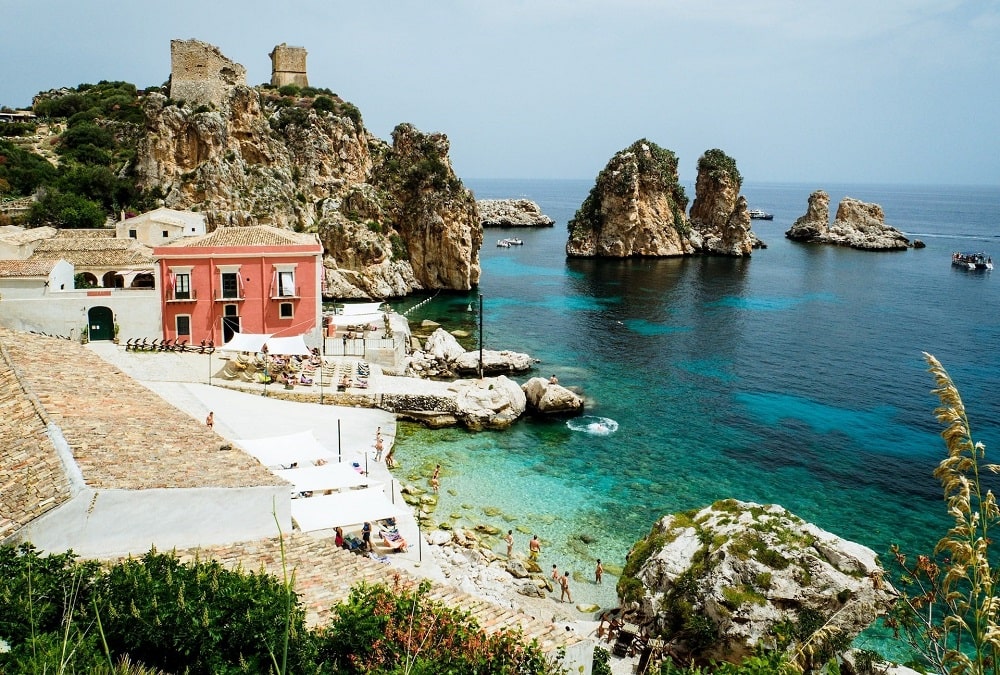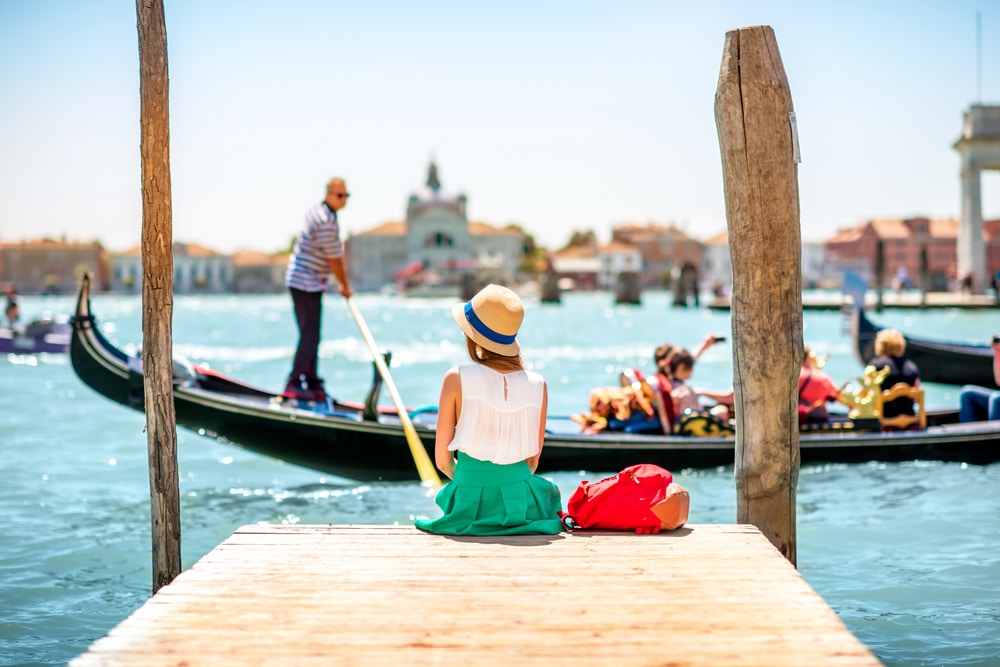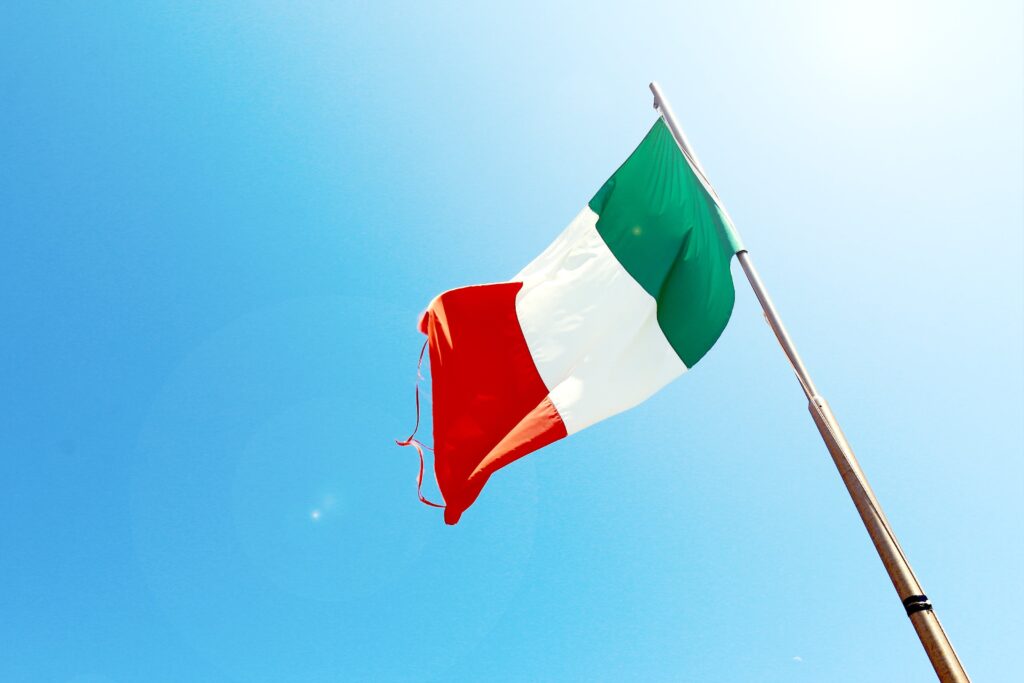
The Italian Language: History, Culture and More
Italian, a language as vibrant and captivating as the country it hails from, has its origins in the Latin spoken by the ancient Romans.
Known for its musical rhythm, it’s not just a means of communication but a gateway to the rich cultural tapestry of Italy.
Whether you’re drawn to its poetic expressions or its impact on art and literature, Italian is more than just words; it’s a journey into the heart of a storied civilization.
In this post, I’m going to give you a crash course in everything Italian, from its history, culture and linguistic heritage to well known Italian idioms, slang and, of course, I’ll go over some of the most well known speakers of Italian. We’ll also cover the FAQs of learning Italian.
And don’t forget to take the quiz at the end of the post to test your Italian knowledge.
Contents
- What Is Italian?
- Italian Varieties and Dialects
- Italian Culture
- Why Learn Italian?
- FAQs About Learning Italian
- Italian Quiz: Test Yourself
- And One More Thing...
Download: This blog post is available as a convenient and portable PDF that you can take anywhere. Click here to get a copy. (Download)
What Is Italian?
Italian is a Romance language that has descended from Latin.
To get technical, it is a part of the Italic branch of the Indo-European language family, which also includes languages like Spanish, French, Romanian and Portuguese.
Not all Italic languages are alike, however, so let’s take a closer look at what makes Italian stand out among the other Romance languages.
Linguistic Elements
The Italian alphabet has 21 letters. All of the letters correspond to English ones, but Italian doesn’t (officially) use j, k, w, x or y.
It also has seven different vowel sounds, with e and o having more than one characteristic sound.
Italian uses nouns, verbs, adjectives, adverbs and articles just like English and most other languages, but one difference is that Italian uses a gender system that classifies some words as femminile (feminine) and others as maschile (masculine).
Almost all Italian words end in a vowel, making it relatively easy to tell when a noun is masculine (usually it ends in –o) or feminine (usually it ends in –a).
For most language-learners, though, the linguistic element of Italian that stands out the most is the verb structure.
There are three main types of verbs in Italian, each with a different ending: –are, –ere and –ire.
Each verb type has a different conjugation format that typically includes removing those final three letters and replacing them with a different ending.
These endings give the reader/listener a lot of important information, including who is doing the action and whether it is taking place in the past, present or future.
Countries Where the Official Language Is Italian
It’s obvious that Italian is the official language of Italy, but did you know that other countries designate it as their official language too?
Italian is the second most-spoken language in the European Union, with over 15 percent of Europeans speaking it as a first language and three percent more (13.4 million people) speaking it as a second language.
Here are the countries where Italian is spoken as the main language:
- Italy
- Vatican City
- San Marino
- Switzerland (in Ticino and the Grisons)
Italian also has minority status in Croatia and Slovenia.
Italian is spoken and understood by large groups of people in Malta, Monaco, Albania and Greece, where it once had official status.
Many people in Corsica also understand it well enough to carry out a conversation (actually, some linguists consider the Corsican language to be a dialect of Italian).
Italian is also used in some areas of Bosnia, Romania, Albania and the United Kingdom.
Outside of Europe, there are many expatriates and immigrants who brought the Italian language to North America, South America (especially Argentina) and Australia.
Over 85 million people speak Italian worldwide, making this a truly international language.
Fun Facts About the Italian Language
- Dante Alighieri (you may know him as just “Dante”) is considered to be the “Father of the Italian Language,” thanks to his epic poem, “La Divina Commedia” (“The Divine Comedy”).
- There are multiple dialects in Italian that are all so different from each other that many of them are classified as separate languages.
- Italian is considered to be the universal language of music, which is especially noticeable in classical music. This is thanks to Italian music notation being the preferred style in the Renaissance and Baroque periods.
- The longest word in the Italian language is psiconeuroendocrinoimmunologia, which is the combined medical study of the nervous system, endocrine system, and the immune system.
- Over 700,000 people in the United States speak Italian, making Italian the fifth most-spoken language in America.
- Italian has had a huge influence on English and other languages. You probably use Italian words on a daily basis and don’t even realize it! Don’t believe me? Think broccoli, zucchini, lottery, quarantine and most importantly… pasta!
- Italian is the closest living language to Latin, which is now considered to be a dead language since no one alive today speaks it as their native language or uses it on a daily basis.
Italian Varieties and Dialects
Linguists find it very difficult to classify the dialects of Italy because they are so diverse and rich that many of them fit the criteria for being their own language.
“Italian” as we know it is spoken and understood by most Italians, but there are an incredible 31 different languages/dialects spoken in the country in total.
We won’t go into every single one of those in this post, but here are the six main languages spoken in Italy (besides Italian, of course):
Sicilian
Spoken in Sicily and Calabria, Sicilian has a whole different grammar system from standard Italian because it was inspired by other languages.
Some studies suggest that it could have even been the first Romance language in existence.
Neapolitan
The Neapolitan dialect spoken in Naples and other places in southern Italy also contains a lot of Spanish-based words.
This dialect is so important and widespread that in 2008, the region of Campania established a law to make it a protected language.
Algherese
Algherese is a variant of Catalan, a language introduced by Spanish colonists in the 1300s. It is spoken in the city of Alghero in Sardinia.
Sardinian
Sardinian (also known as Sardu or Sardo) is spoken by 1.5 million people on the island of Sardinia. It is the language most similar to Latin on this list.
Friulian
Friulian is spoken in the Friulia region in northeast Italy and has been influenced by Venetian, German and Slovene, so it has a very distinct sound.
Venetian
Venetian has four million speakers in the northeast of Italy, most of whom are located in the Veneto region.
Although many people classify it as a dialect, it is actually its own language due to the fact that there are multiple offshoots spoken in different areas.
Italian Culture
Italian isn’t just a language — it’s a whole culture.
Italians have their own way of expressing themselves that is completely unique and really fun to get involved with.
Here’s a look at just a few aspects of Italian culture that shape the people and language:
Well Known Italian Sayings and Idioms
When a language and a culture have been around as long as Italian, the people tend to come up with some pretty clever sayings. Here are some of my personal favorites:
Avere le mani in pasta
Literally: To have your hands in the dough
Figuratively: To be involved in something, especially a project or work.
Chi dorme non piglia pesci
Literally: He who sleeps doesn’t catch fish
Figuratively: You can’t achieve anything if you’re inactive or not working.
Essere al verde
Literally: To be in the green
Figuratively: To be broke or out of money.
Mettere il carro davanti ai buoi
Literally: To put the cart before the horses; Figuratively
Doing things in the wrong order, getting ahead of oneself.
Chi ha il pane non ha i denti
Literally: He who has bread doesn’t have teeth
Figuratively: Those who have resources or possessions may not have the means to fully enjoy them.
Cercare il pelo nell’uovo
Literally: To look for a hair in the egg
Figuratively: To nitpick, to look for flaws or problems in a situation.
Buona notte al secchio
Literally: Good night to the bucket
Figuratively: It’s all over, it’s a lost cause.
Essere come cane e gatto
Literally: To be like cat and dog
Figuratively: To constantly fight or argue with someone.
Fare buon viso a cattivo gioco
Literally: To make a good face at a bad game
Figuratively: To put on a brave face in a difficult or unpleasant situation.
Gestures and Body Language
There is a very pervasive stereotype that Italians use a lot of body language and hand gestures when they talk.
And after a few years of living in Italy and interacting with Italians on a daily basis… I can tell you that it isn’t just a stereotype.
While this sort of thing is certainly exaggerated for television or people making jokes, Italians really do a lot of talking with their hands.
Italians are also very physical —when you meet a friend or loved one, you greet them with air kisses on each cheek to say hello. It also isn’t uncommon for guys to clap each other on the shoulder or hug more often than men in the U.S. might do.
Italians in general are a very loving, affectionate group set on spreading that love and affection to everyone they meet.
Humor
With such a food-based culture, it is no surprise that Italian humor is also based on food.
Sicilians, for example, have been known to describe short, round people as “arancini con i piedi” or “arancini (deep-fried balls of rice with meat sauce and cheese inside) with feet.”
I myself have been called “mozzarella,” more than once, thanks to my lack of a summer tan.
This good-natured teasing is not done with any sort of malice — it is just a way to joke around with your friends, and is the cornerstone of much of Italian humor.
Food
Food is absolutely at the heart of Italian culture.
Italians feel like the best way to express how much they care for someone is to cook them a nice, big meal — and you won’t find me complaining!
I’m not kidding when I say that in Italy, every meal is an event: if you’re eating as a family, lunch and dinner could take several hours each, depending on whether there are guests and how much everybody has to say.
Italian meals usually have at least three courses to allow for plenty of chat time.
Italian Slang
Just like you’ve heard in movies and on the streets of Italian cities, slang is huge in Italian. Though there are thousands of slang words, here’s a selection of some of the most well known Italian slang words.
Che casino! — What a mess!; Used to express confusion or chaos.
Magari! — I wish!/If only!; Used to express desire or hope for something.
Boh — I don’t know; Equivalent to the English “I don’t know,” often used in a casual or indifferent manner.
Figurati! — Don’t mention it!/No problem!; Used to downplay a favor or express that something is not a big deal.
Figo — Cool/Awesome; Describing something or someone as stylish or impressive.
Avere le palle — To have guts/To be brave; Referring to someone being courageous or bold.
Mi fa schifo — It disgusts me; Used to express strong disapproval or dislike for something.
Dai! — Come on!; Encouraging someone to do something or expressing disbelief.
Sbagliare di grosso — To make a big mistake; Acknowledging a significant error or blunder.
To read more about Italian slang, see this post.
Literature and Movies in Italian
Italians are well known for their literature and movies. Here’s a small selection of some of the best.
Literature
“La Divina Commedia” (The Divine Comedy) by Dante Alighieri: An epic poem considered one of the greatest works of world literature. It explores the realms of Hell, Purgatory, and Paradise.
“Il Gattopardo“(The Leopard) by Giuseppe Tomasi di Lampedusa: A historical novel set in Sicily during the Risorgimento, offering a rich portrayal of societal changes.
“Il nome della rosa” (The Name of the Rose) by Umberto Eco: A mystery novel set in a monastery in Italy during the Middle Ages, combining historical fiction with detective elements.
“Se una notte d’inverno un viaggiatore” (If on a Winter’s Night a Traveler) by Italo Calvino: An innovative and postmodern novel that weaves multiple narratives together, exploring the act of reading.
“Gomorra” (Gomorrah) by Roberto Saviano: An investigative non-fiction book exposing the inner workings of the Camorra, the Neapolitan Mafia.
“Il giardino dei Finzi-Contini” (The Garden of the Finzi-Continis) by Giorgio Bassani: A novel set in Ferrara before World War II, exploring the lives of an aristocratic Jewish family.
“Cristo si è fermato a Eboli” (Christ Stopped at Eboli) by Carlo Levi: A memoir depicting the author’s exile to a remote Southern Italian village by the Fascist government.
Film
“Nuovo Cinema Paradiso” (Cinema Paradiso) directed by Giuseppe Tornatore: A nostalgic film about a filmmaker’s childhood in a small Sicilian village and his friendship with the local cinema’s projectionist.
“La Dolce Vita” (The Sweet Life) directed by Federico Fellini: An iconic film exploring the decadence and excess of Rome’s high society in the 1960s.
“Il Gattopardo” (The Leopard) directed by Luchino Visconti: An adaptation of Giuseppe Tomasi di Lampedusa’s novel, capturing the social and political changes in Sicily.
“8½” directed by Federico Fellini: A surrealist film about a director struggling with creative block, blurring the lines between reality and fantasy.
“La grande bellezza” (The Great Beauty) directed by Paolo Sorrentino: A visually stunning film that explores the decadence and beauty of contemporary Rome.
“Ladri di biciclette” (The Bicycle Thief) directed by Vittorio De Sica: A neorealist classic depicting the struggles of a man trying to recover his stolen bicycle, crucial for his job.
“Amarcord” directed by Federico Fellini: A semi-autobiographical film capturing the director’s memories of growing up in a small coastal town in Italy.
“1900” directed by Bernardo Bertolucci: An epic historical drama directed by Bernardo Bertolucci, known for its portrayal of the socio-political landscape in Italy from the early 1900s to the end of World War II.
Popular Culture
Italy has left its mark on popular culture in a way that not many other cultures have.
Films and shows about Italians like “The Godfather” or “The Sopranos” have led to many pop culture references
Then there’s the music: from Dean Martin to Frank Sinatra and even Lady Gaga, the Italian influence is extremely present in the music world.
The biggest Italian influence is probably their food. Nearly every country has Italian food restaurants and recipes that people just can’t get enough of.
I guarantee you can go almost anywhere in the world and find an Italian restaurant to get your pizza or pasta fix!
Italian Businesses and Brands
Italy is home to numerous renowned companies and brands across various industries. Here are some notable ones:
Ferrari: A symbol of luxury and performance, Ferrari is one of the world’s most iconic sports car manufacturers, known for its sleek design and high-speed capabilities.
Lamborghini: Another prestigious Italian automaker, Lamborghini is famous for its high-performance, exotic sports cars.
Gucci: A global luxury fashion and accessories brand, Gucci is renowned for its high-quality products and distinctive design.
Prada: An influential fashion house, Prada is recognized for its sophisticated and innovative designs in clothing, accessories and footwear.
Armani: Founded by Giorgio Armani, this fashion label is synonymous with elegance and style, offering a wide range of products including clothing, accessories and home decor.
Fiat Chrysler Automobiles: A major player in the automotive industry, FCA is an international conglomerate that includes the Italian brands Fiat, Alfa Romeo, Maserati and Lancia.
Versace: Founded by Gianni Versace, this luxury fashion brand is known for its bold and glamorous designs in clothing, accessories and home furnishings.
Dolce & Gabbana: An influential fashion house specializing in luxury items such as clothing, accessories and fragrances, known for its opulent and distinctive style.
Barilla: One of the world’s largest pasta producers, Barilla is a household name when it comes to Italian food products, including pasta and sauces.
Ferrero” Famous for its confectionery products, Ferrero is the creator of well-known brands such as Nutella, Ferrero Rocher and Kinder.
Campari Group: An Italian beverage company known for its iconic aperitif, Campari, as well as other popular spirits and liqueurs.
Pirelli: A major tire manufacturer, Pirelli is well-regarded for its high-performance and premium tires used in various vehicles, including luxury and sports cars.
Well Known Italian Speakers
Italians have always had a huge impact on the world. Here are some of the most famous Italians, both living and dead.
Umberto Eco: A contemporary author, philosopher and semiotician, Eco’s novels, including “The Name of the Rose,” have been widely acclaimed.
Primo Levi: An Italian Jewish chemist and writer, Levi is known for his autobiographical works, especially his account of his experiences in Auschwitz during World War II.
Roberto Benigni: An actor, comedian, and director, Benigni is known for his passionate and expressive speaking style. He gained international fame with the film “Life is Beautiful.”
Sophia Loren: An iconic Italian actress, Loren is known for her talent both in Italian and international cinema.
Federico Fellini: A legendary film director and screenwriter, Fellini’s work, including “La Dolce Vita” and “8½,” has left a lasting impact on cinema.
Luigi Pirandello: A Nobel Prize-winning playwright and novelist, Pirandello’s works explore the complexities of human identity and reality.
Sergio Leone: A renowned film director, Leone is credited with creating the Spaghetti Western genre, and his films often feature iconic Italian actors such as Clint Eastwood
Monica Bellucci: A widely recognized actress and model, Bellucci has appeared in numerous films, including “Malèna” and “The Matrix” series.
Why Learn Italian?
Many people decide to pursue Italian simply for the fact that it inspires them. But there are other reasons to learn it as well.
Whether you want to communicate with locals on vacation, impress your Italian friends or study it in school to fill a language requirement, there is no bad reason for wanting to learn Italian.
Learning Italian does not only teach you the language, but expands your perspective. With Italian, you’ll understand so much more about the world from film to literature and music and even just the words on the menu at your favorite Italian restaurant.
You’ll also learn a whole new culture, which tends to open your eyes even more.
Not to mention that learning any language is a challenge and a great way to work on your personal development.
Nothing beats the satisfaction of knowing that you reached your language goals and can be considered an Italian speaker!
FAQs About Learning Italian
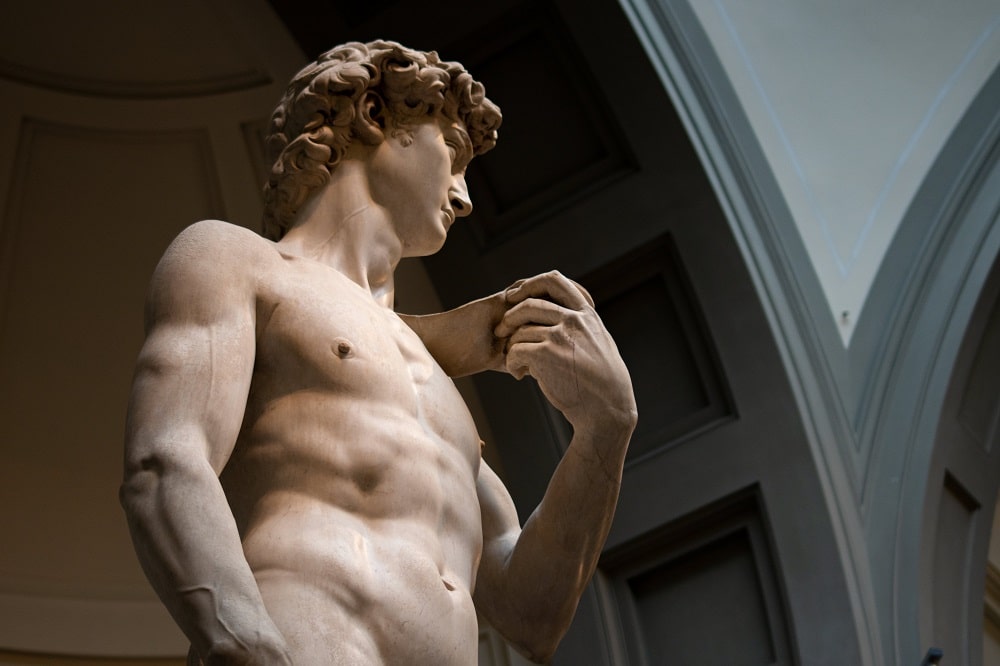
Which Variety of Italian Should I Learn?
You should learn standard Italian to start since this is the version of Italian that all speakers understand.
From there, you can get a bit more specific and focus on the dialects you wish to know.
How Hard Is It to Learn Italian?
Italian is a fairly easy language to learn for most people. The U.S. State Department’s Foreign Service Institute puts the language in their easiest language category for native English speakers.
Once you grasp the gender system and verb conjugations, the quicker you will get a hang of the rest of the language.
If you already speak a Romance language, these concepts will come even easier to you.
How Long Does It Take to Learn Italian?
There is no easy answer to this question. It depends largely on what your own native language is and, more importantly, how much time and effort you dedicate to learning Italian.
According to the Common European Framework for Reference for Languages, however, it is estimated to take around 600 hours in a classroom to reach a high intermediate level (B2) of Italian.
If you practice 30 minutes a day, you should be able to reach an elementary level in three to six months. If you practice even more and really stick with it, your Italian could be on a professional level in three years.
How long it takes really depends on you and your study style.
How Many Italian Words Do I Need to Know?
It is estimated that there are over 427,000 words in the Italian language, but that doesn’t mean you need to know them all.
Italians only really use around 6,500 words on a regular basis.
Once you know all those words, you can talk about almost anything you could want.
Which Jobs Value Italian?
Once you’ve mastered Italian, you can get a job as an interpreter, translator, teacher, or even a writer/editor for websites like FluentU.
There are many international businesses in different sectors that value Italian language skills because you can help them to interact with clients in Italy and across the globe.
It is also a useful language to know if you are in the museum or archeological fields, because it can help you to decipher ancient texts and other artifacts you may find.
What’s the Best Way to Start Learning Italian?
The absolute best way to learn Italian is with authentic Italian content.
Immersion is key. Read books in Italian, watch television shows and movies in Italian, read Italian news in Italian, watch Italian YouTube videos.
For Italian immersion with extra language learning support, you could also try using FluentU.
FluentU takes authentic videos—like music videos, movie trailers, news and inspiring talks—and turns them into personalized language learning lessons.
You can try FluentU for free for 2 weeks. Check out the website or download the iOS app or Android app.
P.S. Click here to take advantage of our current sale! (Expires at the end of this month.)
To really understand the language quickly, conversational practice is the way to go. Find as many opportunities as possible to listen to and speak with native Italian speakers so that you can pick up on how the language is actually applied.
Technical skills like grammar and vocabulary are important too, you will even pick up on this naturally with native content.
Italian Quiz: Test Yourself
However you choose to learn it, though, Italian is an incredible, fun language that can truly lead to una bella vita (a beautiful life)!
Download: This blog post is available as a convenient and portable PDF that you can take anywhere. Click here to get a copy. (Download)
And One More Thing...
If you're as busy as most of us, you don't always have time for lengthy language lessons. The solution? FluentU!
Learn Italian with funny commericals, documentary excerpts and web series, as you can see here:
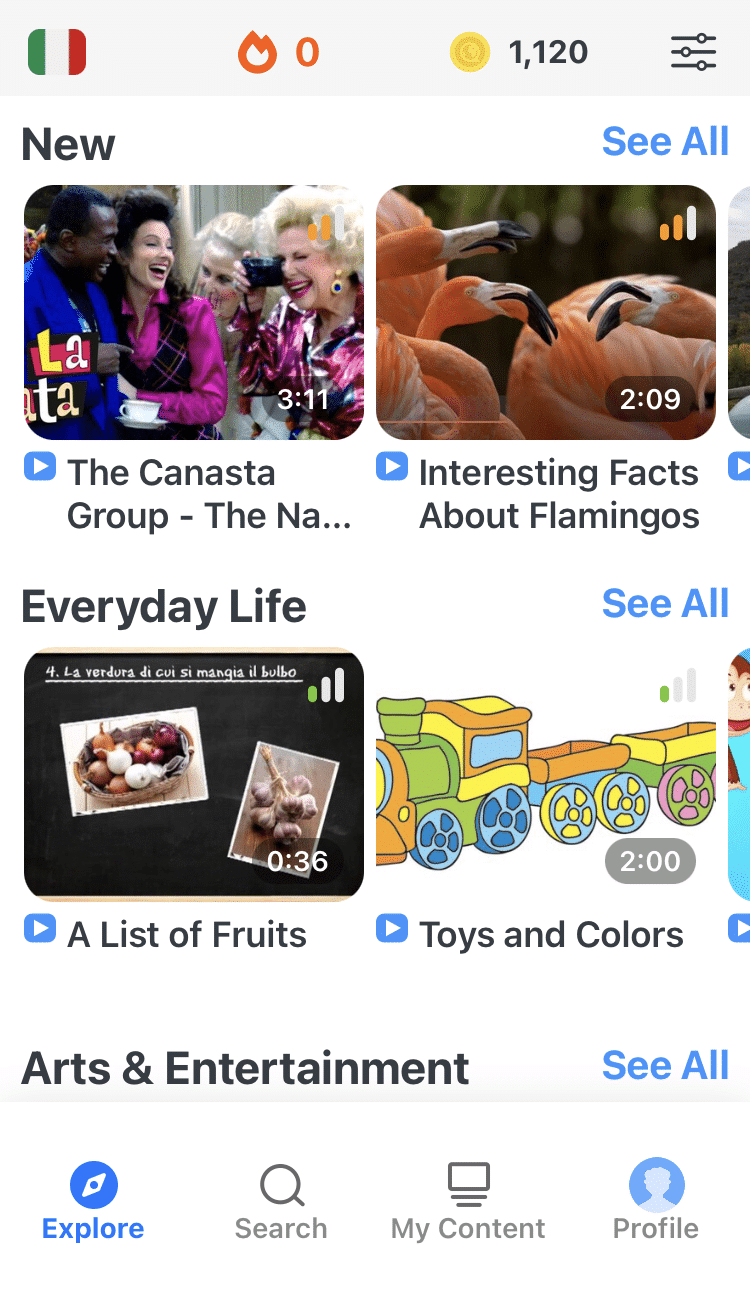
FluentU helps you get comfortable with everyday Italian by combining all the benefits of complete immersion and native-level conversations with interactive subtitles. Tap on any word to instantly see an image, in-context definition, example sentences and other videos in which the word is used.
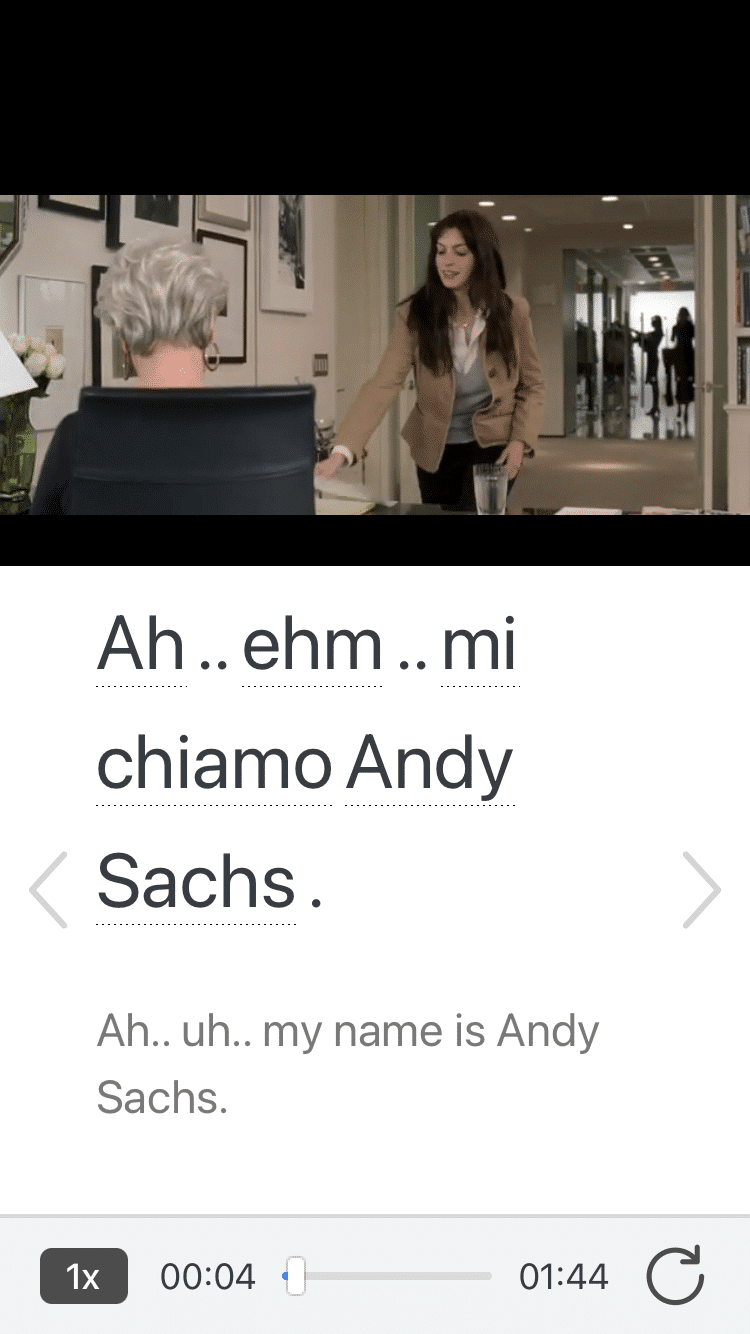
Access a complete interactive transcript of every video under the Dialogue tab, and review words and phrases with convenient audio clips under Vocab.
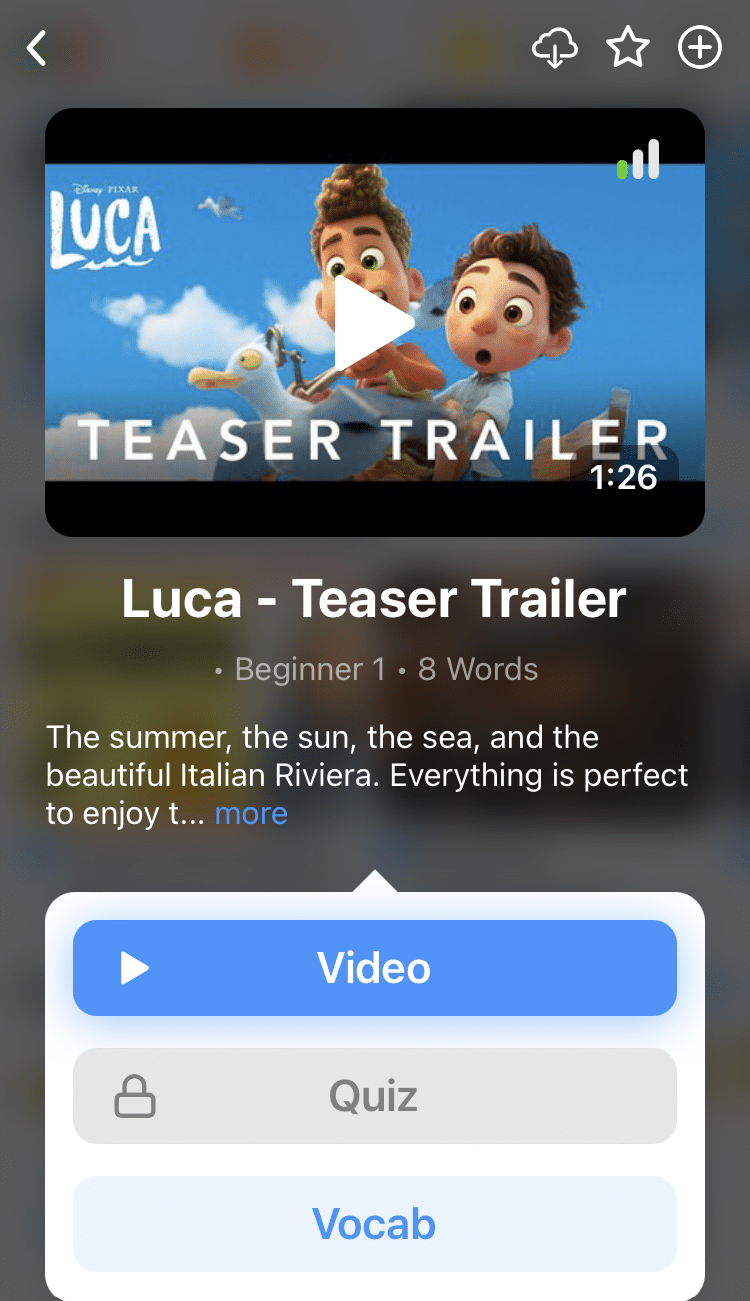
Once you've watched a video, you can use FluentU's quizzes to actively practice all the vocabulary in that video. Swipe left or right to see more examples of the word you’re on.
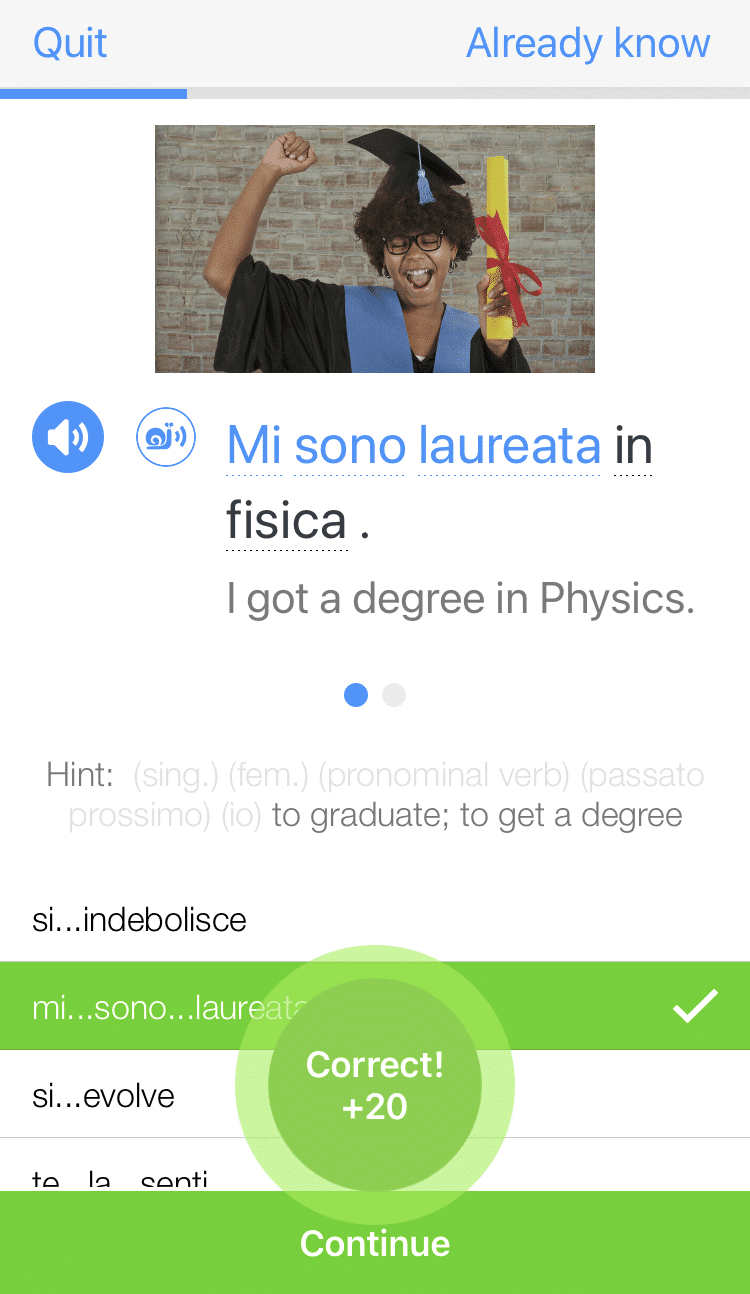
FluentU will even keep track of all the Italian words you’re learning, and give you extra practice with difficult words. Plus, it'll tell you exactly when it's time for review. Now that's a 100% personalized experience!
The best part? You can try FluentU for free with a trial.
Start using the FluentU website on your computer or tablet or, better yet, download the FluentU app from the iTunes or Google Play store. Click here to take advantage of our current sale! (Expires at the end of this month.)
